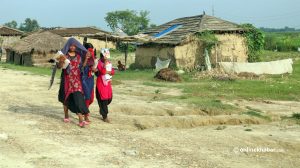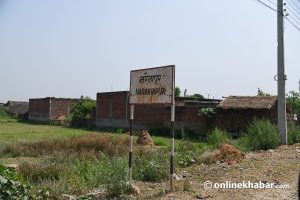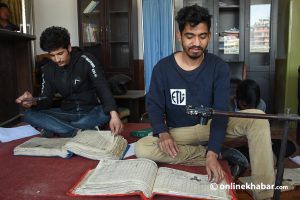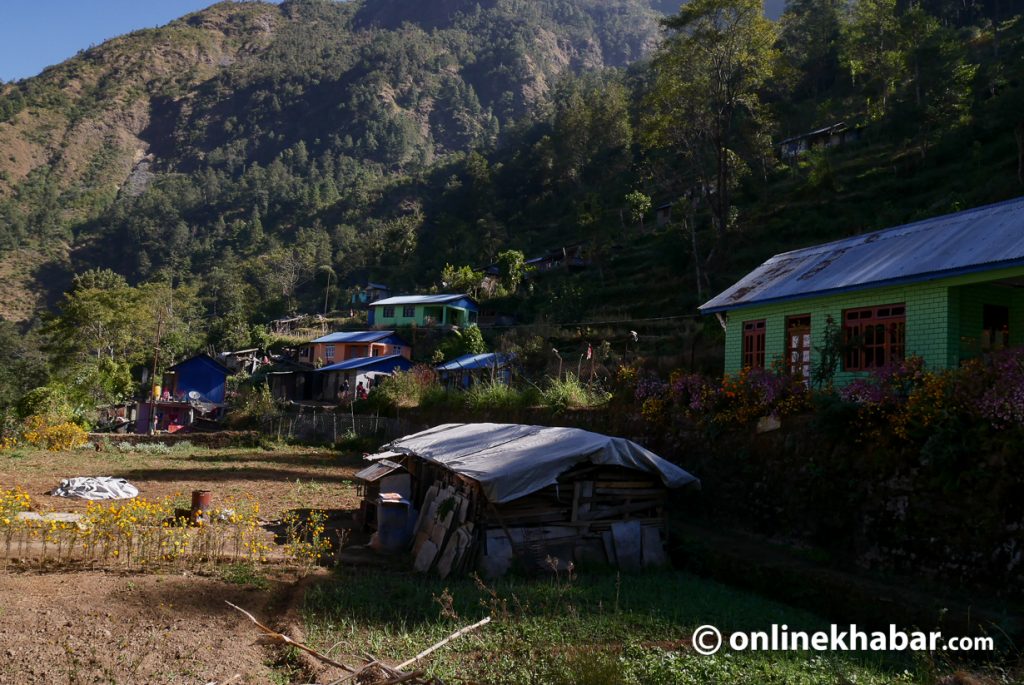
Bhupal Pokharel the chair of Dhurkot rural municipality is excited about branding and marketing local lemons and oranges.
During the Covid pandemic in 2020, the local government launched a program to cultivate barren land with the aim of achieving self-sufficiency in food production and exporting fruits. To implement the plan, the local government decided to give subsidies to farmers who grow lemons, oranges and fruits on land that had been barren for two years.
This initiative also helped in retaining the youth who were in the village due to the pandemic. The rural municipality is providing a subsidy of Rs 3,000 per plant to those who cultivate lemons, oranges, and other fruits on land that has been barren for two years.
Additionally, they also offer Rs 4,000 per plant for those engaged in the cultivation of grains, vegetables, and spices. Farmers who grow vegetables and fruits on leased land receive Rs 5,000 per plant in subsidy.
According to Hom Narayan Shrestha, the former chair of the Municipal Association of Nepal, most local governments, including Dhurkot rural municipality in Gulmi, have implemented a rule stating that land must not be left barren.
These lands were barren mostly due to people leaving the village during the armed conflict. Fast forward 20 years, things have changed after the peace process and promulgation of the constitution with local governments like Dhurkot running successful agricultural projects as mentioned above.
“Local governments are giving subsidies even in agricultural production, arranging agricultural tools, distributing seeds and sending veterinary doctors from house to house. This helps everyone,” says Shrestha.
Serving the locals
Until six years ago, when local residents from Malika in Myagdi fell ill, they had to be transported on stretchers to the headquarters in Beni for treatment.
“Many have lost their lives due to this,” says Beg Prasad Garbuja, chair of Malika rural municipality. “After the establishment of local governments, this has changed. We have emphasised building roads and ensuring people have access to education and health care.”
According to Garbuja, Malika had a primary health centre in the past. Now, the primary health centre has been upgraded and transformed into a 15-bed hospital. Additionally, there are 10 more community health units spread across the village.
Following the local government’s emphasis on road infrastructure, it has become much more convenient to navigate through the capital and major cities of the country, he says. Roads now extend to all the wards, greatly enhancing accessibility for logistics and market transportation.
“The face of many remote villages has changed after the local government started setting aside budgets for projects,” says Garbuja. “The people are also taking ownership in these projects and have started to make us alert on various issues.”
Some local governments also offer scholarships for technical education, engineering, and MBBS programs, aiming to inspire individuals to pursue careers in civil service and contribute to the envisioned sustainable development of the city.
Take Jumla’s Chandannath municipality and Patarasi rural municipality as examples. Both are providing scholarships to one MBBS student each with the aim of producing doctors in the Karnali region.
Some local governments in rural Nepal have also been organising free preparation classes for public service examinations.
According to Pemma Wangchen Gurung, vice chair of the Shey Phoksundo- rural municipality of Dolpa, public service preparation classes are being organised for underprivileged individuals including the poor, Dalits, conflict victims, and members of ethnic and marginalised communities. These classes aim to support those who were unable to pursue their studies due to financial constraints but aspire to enter the civil service.
In addition to this, the Shey Phoksundo rural municipality has introduced the concept of ‘one house, one business,’ with a specific emphasis on promoting animal husbandry. The rural municipality has established a cooperative in each ward under its own coordination.
“Exporting materials such as milk, curd, cheese and meat has been facilitated through cooperatives,” says Wangchen. “The locals are realising the importance of federalism and federalism is needed more for the rural areas.”
“We are moving forward in such a way that we can keep ourselves in check to reduce minor epidemics and calamities.”
Hopeful scenario due to local government
Hom Narayan Shrestha, the former president of the Municipal Association of Nepal says a lot has changed in the past six years. He says the public schools are better and the number of students in the schools is also on the up with low dropout rates.
“This is thanks to the proactiveness of the local level,” says Shrestha.
The local government’s initiatives include providing scholarships to students from marginalised families and covering lunch expenses. This has had a significant positive impact on education in the area.
Shrestha believes various local governments are looking to invest in education and health rather than roads because they believe this is what will shape their constituency and build a better society in the future.
“Roads have reached most parts of Madhes Province but I do not think it is developed,” he says.
He points out how the human development index of Karnali is better than in some villages in Madhesh.
“On the whole, the efforts made by the local government in public services, education, health and other sectors, the protection and development of government property have made the people enthusiastic about their future,” says Shrestha.
In Schedule 8 of the Constitution, there are subject areas delineating the exclusive authority of local government. The common rights list, shared by the federation, province, and local levels, comprises 15 subjects. As outlined in the work elaboration report, the local level is tasked with executing a total of 355 tasks. These rights and their associated functions span political, administrative, social, developmental, and financial domains.
However, stakeholders say that the local level is average in terms of utilising the acquired rights. Balananda Paudel, the chair of the Local Level Restructuring Commission, says that the first term of the local government was spent on building infrastructure, allocating resources and creating a legal basis.
“Citizens have felt the presence of local government all over the country. Being on the front line, people’s hopes and confidence have increased,” says Paudel.
Struggle with centralised thinking
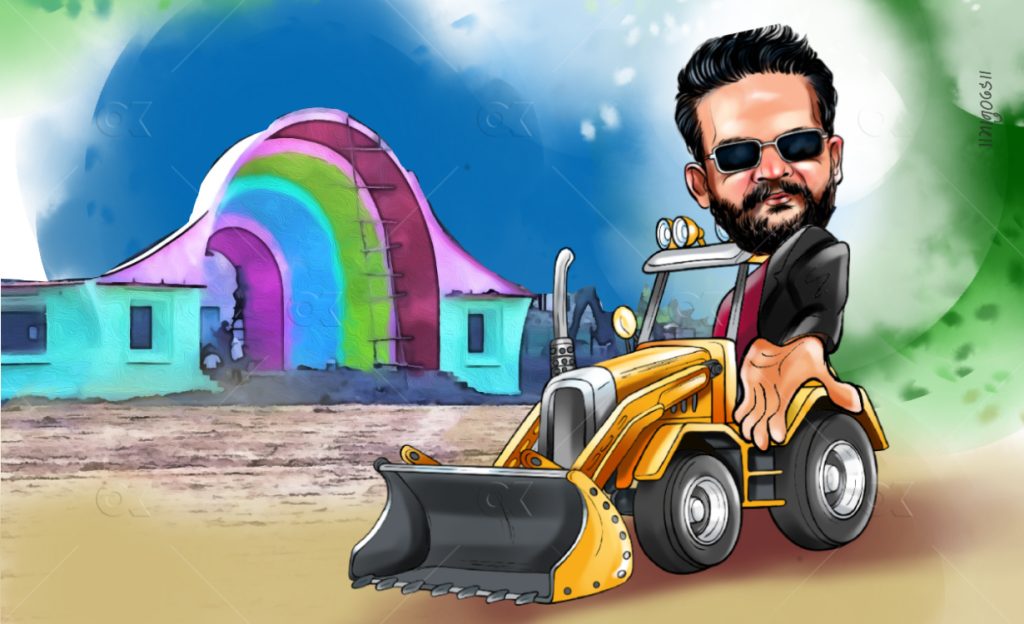
Kathmandu metropolitan city’s Mayor Balen Shah and Dharan sun-metropolitan city’s Mayor Harka Sangpang have taken different initiatives in their respective area, which has done the job of informing the people about the jurisdiction of the local government.
Mayor Balen Shah even issued a statement to the federal government, emphasising the importance of adhering to the constitutional provisions and subject areas.
“The constitution and laws of Nepal have entrusted the Kathmandu metropolitan city with the managerial authority to make laws, the executive authority to implement the law and the judicial authority to settle disputes,” Mayor Balen said in a statement issued on August 28, 2022. “When you have executive authority, it is not appropriate to remain in a state of inaction without using it. We firmly believe that.”
Administrative expert Kashiraj Dahal says that the initiative of the local government to use the acquired rights should be taken positively.
“This is what the common people want – no one can encroach on the government land, and the river cannot be converted into a place to mine sand and rocks. The initiative taken in this case has not only won the hearts of the citizens, but it shows that the local government is trying to be established as a government,” Dahal told Onlinekhabar.
However, in such a time, Dahal holds the belief that the representatives in the federal and provincial governments are conveying a message of distrust towards the local government. He suggests that the federal government’s lack of support for local governance seems to be a deliberate policy stance.
Local-level planner Keshav Prasad Bhattarai’s experience is that the federal government is trying to move forward by keeping all local governments under its control.
According to Bhattarai, the federal civil service bill, designed in a way that places the chief administrative officer of the local level under the authority of the federal government, along with the school education bill registered in the House of Representatives with federal government intervention, serve as strong examples of policy conflicts.
According to Bhattarai, who played a key role in the development of 35 local-level master plans in the previous term, there has been a persistent state of confusion stemming from the federal government’s failure to address critical issues that require its attention.
There is a constitutional provision stating that if provincial or local laws conflict with federal laws, they are automatically invalidated. Even if a law made by the local government contradicts a provincial law, it is rendered ineffective.
“The local government spent its first term hoping that the federal government would make the laws. When it did not, it felt the provincial government would make the laws. Such a mistake will not be repeated. It does not help anyone,” says Bhattarai.
Balanand Poudel, chair of the Local Level Restructuring Commission, also suggests that the local government should try take do what i rightfully theirs.
“It seems that we should always be aware of whether the policies that have come are in the process of making laws or are in the process of being made, are compatible with the constitution or not,” he says. “This light of hope and enthusiasm should not be extinguished.”
This story was translated from the original Nepali version and edited for clarity and length.






